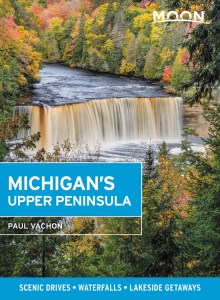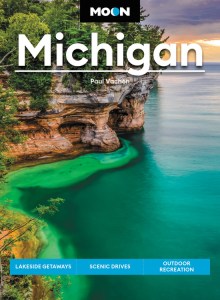The Huron Mountains in Michigan’s Upper Peninsula
Ask 10 people where the Huron Mountains begin and end, and you’re likely to get 10 different answers. But everyone will agree that they fall within the vague boundaries of Lake Superior to the north and east and U.S. 41 to the south and west. It’s over 1,000 square miles where the terrain rises to rugged hills and even mountains. Mount Arvon, about 15 miles due east of L’Anse, tops out at 1,979 feet, the highest point in the state.

On a map you’ll see it’s an intriguing parcel of land, virtually devoid of towns and roads. What the Huron Mountains do have, however, is peaks and valleys, virgin white pine forests, hundreds of lakes, waterfalls that don’t appear on maps, and the headwaters of several classic wilderness rivers, far more wildlife than people, and utter silence. Even by UP standards, it’s a rugged place.
The area’s preservation wasn’t the result of happy accident. Beginning around the 1880s, the Huron Mountains became the wilderness retreat of choice for several millionaire industrialists. Cyrus McCormick, head of the lucrative farm-implement company that would become International Harvester, amassed a huge wilderness estate around White Deer Lake, now part of the Ottawa National Forest’s McCormick Tract Wilderness Area. Frederick Miller of Miller Brewing owned his piece of wilderness at Craig Lake, now a wilderness state park. Dozens of others owned camps at the Huron Mountain Club, an organization so exclusive that even Henry Ford was turned down for membership when he first applied. The members easily had enough clout to stop construction of a road that was to link L’Anse with Big Bay—County Road 550 abruptly ends west of Big Bay at a gate and security guard house.
Today the 25,000-acre enclave is owned mostly by the descendants of those original members. Though locals grumble about the lack of access to the property, the Huron Mountain Club has proved to be an exceptional steward of the land. It has kept away the loggers, miners, and developers, leaving what some consider the most magnificent wilderness remaining in the Midwest. Within its boundaries lie towering virgin pines, blue ribbon trout streams, and pristine lakes. Happily, not all of the land is privately held; much of the Huron Mountains wilderness is public land.
Newsletter Signup
By clicking ‘Sign Up,’ I acknowledge that I have read and agree to Hachette Book Group’s Privacy Policy and Terms of Use
Big Bay Area
Many people approach the Huron Mountains from the east, where County Road 550 climbs 30 miles out of Marquette to the tiny town of Big Bay (population 270). Sited above Lake Independence and within minutes of Lake Superior, Big Bay is sandwiched between wilderness and inland sea. The town has swung from prosperity to near ghost-town status more than once, first as a bustling logging outpost, then as one of Henry Ford’s company towns, home to busy sawmills. More recently, residents joke about how the local bank, well aware of the town’s volatile economy, was loath to loan money to town businesses—an overly conservative stance that proved to be the bank’s undoing. While the town’s 20 businesses are thriving, the bank closed down. Visitors now frequent Big Bay for its Huron Mountains access, Lake Superior harbor, Lake Independence fishing, and unique lodgings.
McCormick Wilderness
Once the private wilderness retreat of Cyrus McCormick, whose father invented the reaping machine, the 27-square-mile McCormick Wilderness was willed to the U.S. Forest Service by his family in 1967. Today it remains in pristine wilderness condition: remote, undeveloped, and largely unused. In other words, it’s perfect for backcountry hiking and camping. No-trace camping is permitted throughout the wilderness area. For more information, contact the Ottawa National Forest Ranger District (4810 E. M-28, Kenton, 906/852-3500).
To access the McCormick Tract, follow U.S. 41/M-28 west from Marquette about 50 miles to Champion. Just after you cross the Peshekee River, follow the first paved road north. This is County Road 607, also called the Peshekee Grade or the Huron Bay Grade. In about 10 miles, you’ll see a sign for Arfelin Lake; take the next road to the right and watch for a sign and a small parking area.
Once here, you’ll be on your own to explore this rugged terrain of high hills, rivers, muskeg, and bedrock outcroppings. Don’t expect marked and maintained hiking trails. This tract is wild, so with the exception of a well-worn path to White Deer Lake, where the McCormicks’ lodge once stood, you’ll be traveling cross-country. A compass and topographic map are absolute necessities. Wildlife sightings can be excellent as the state’s largest moose herd roams here, which in turn has attracted predators like the elusive gray wolf. You’re not likely to see a wolf, but you may be treated to one’s hollow wail at your camp in the evening.
Newsletter Signup
By clicking ‘Sign Up,’ I acknowledge that I have read and agree to Hachette Book Group’s Privacy Policy and Terms of Use


